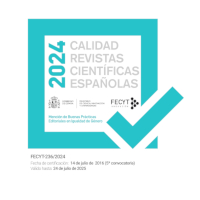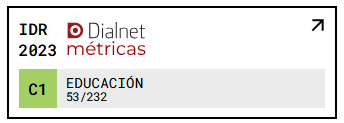Best educational practices to learn english: pedagogic aspects
DOI:
https://doi.org/10.18172/con.1292Keywords:
Best practices, learning, teaching, English, CSEAbstract
This empirical research investigates the pedagogical practices in the teaching-learning process of English as a foreign language, the frequency of these practices and their impact in 4th year of Compulsory Secondary Education (CSE) students marks in English as a school subject. This study aims to know which pedagogical practices are the best to learn English and how often they should be used in the English language classroom. This research concludes affirming that the best practices to learn English as a foreign language are: the use of printed materials, cassette/CDs players, textbooks, and finally, the duration of students English homework should be short.Downloads
References
ABDOULAYE, A. (2003). Conceptualisation de “bonnes pratiques” en education: essai d´une approche internationale à partir d´enseignements tirés d´un projet. Bureau Internacional de Éducation (Développement curriculaire et “bonne pratique” en éducation) Ginebra: BIE. Disponible en: www.ibe.unesco.org.
ALEXANDER, R. (1997). Policy and Practice in Primary Education: Local Initiative, Nacional Agenda. London: Routledge.
BOLÍVAR, A. (1999). Cómo Mejorar los Centros Educativos. Madrid. Síntesis.
BRANNAN, T., DUROSE, C., JOHN, P. y WOLMAN H. (2006). Assessing Best Practices as a Means of Innovation. Paper presented at the Annual Conference of the Urban Affair Association. Montreal. Canadá. (22 April). Disponible en: http://www.ipeg.org/uk/publications/index.php.
COHEN, L. y MANION, L. (1990). Métodos de Investigación Educativa. Madrid: La Muralla.
COFFIELD, F. y EDWARD, S. H. (2009). Rolling out “good”, “best” and “excellent” practice. What next? Perfect Practice? British Educational Research Journal, 35(3), 371-390.
COLÁS, M. P. y BUENDÍA, E. (1994). Investigación Educativa. Sevilla: Ediciones Alfar.
CORPAS, M. D. (2012). Multiculturalidad y Publicidad en Educación Secundaria: Un proyecto Educativo Europeo” en L. Luque Nadal (Ed.), Transculturalidad, Lenguaje e Integración, pp. 149-160.
ESCUDERO, J. M. (2009). Buenas prácticas y programas extraordinarios de atención al alumnado en riesgo de exclusión educativa. Profesorado, 13(3), 107-141.
HARGREAVES, A. (2003). Enseñar en la Sociedad del Conocimiento. Barcelona: Octaedro.
MARTÍN, M. A. (2009). “Historia de la metodología de enseñanza de lenguas extranjeras”. Tejuelo, 5, 54-70.
McMILLAN, J. y SCHUMACHER, S. (2005). Investigación educativa. Madrid: Pearson Educación.
PHIPPS, A. y GUILHERME, M. (2004). Modern Languages: Learning and Teaching in an Intercultural Field. London: Sage.
SÁNCHEZ CARRIÓN, J. J. (1999). Manual de análisis estadístico de los datos. Madrid: Alianza Editorial.
SHOHAMY, E. (2006). Language Policy: Hidden Agendas and New Approaches. London: Routledge.
WILLIS, J. (2002). Teaching English through English: a course in classroom language and techniques. London: Longman.
Downloads
Published
How to Cite
Issue
Section
License
The authors retain copyright of articles and authorize Contextos Educativos. Revista de Educación the first publication. They are free to share and redistribute the article without obtaining permission from the publisher as long as they give appropriate credit to the editor and the journal.
Self-archiving is allowed too. In fact, it is recommendable to deposit a PDF version of the paper in academic and/or institutional repositories.












